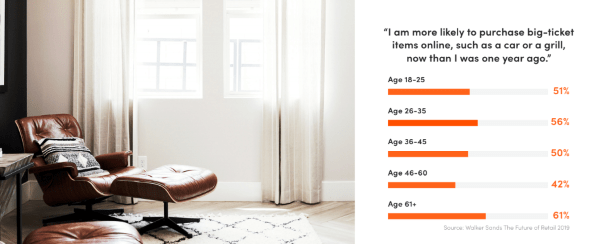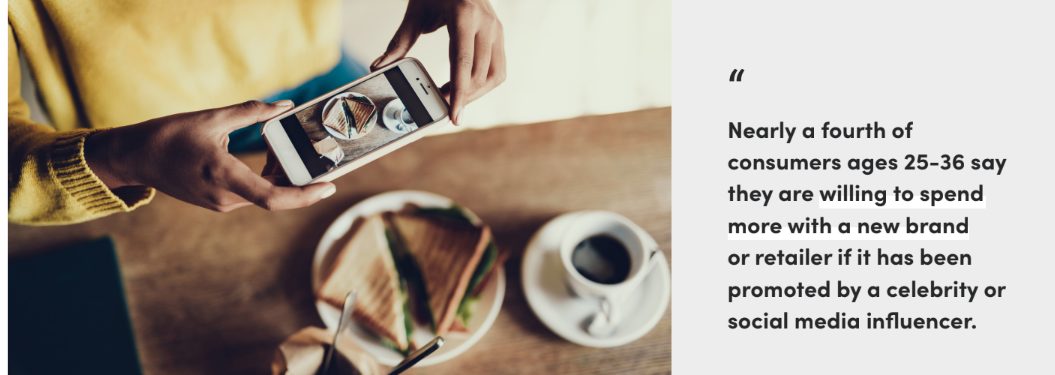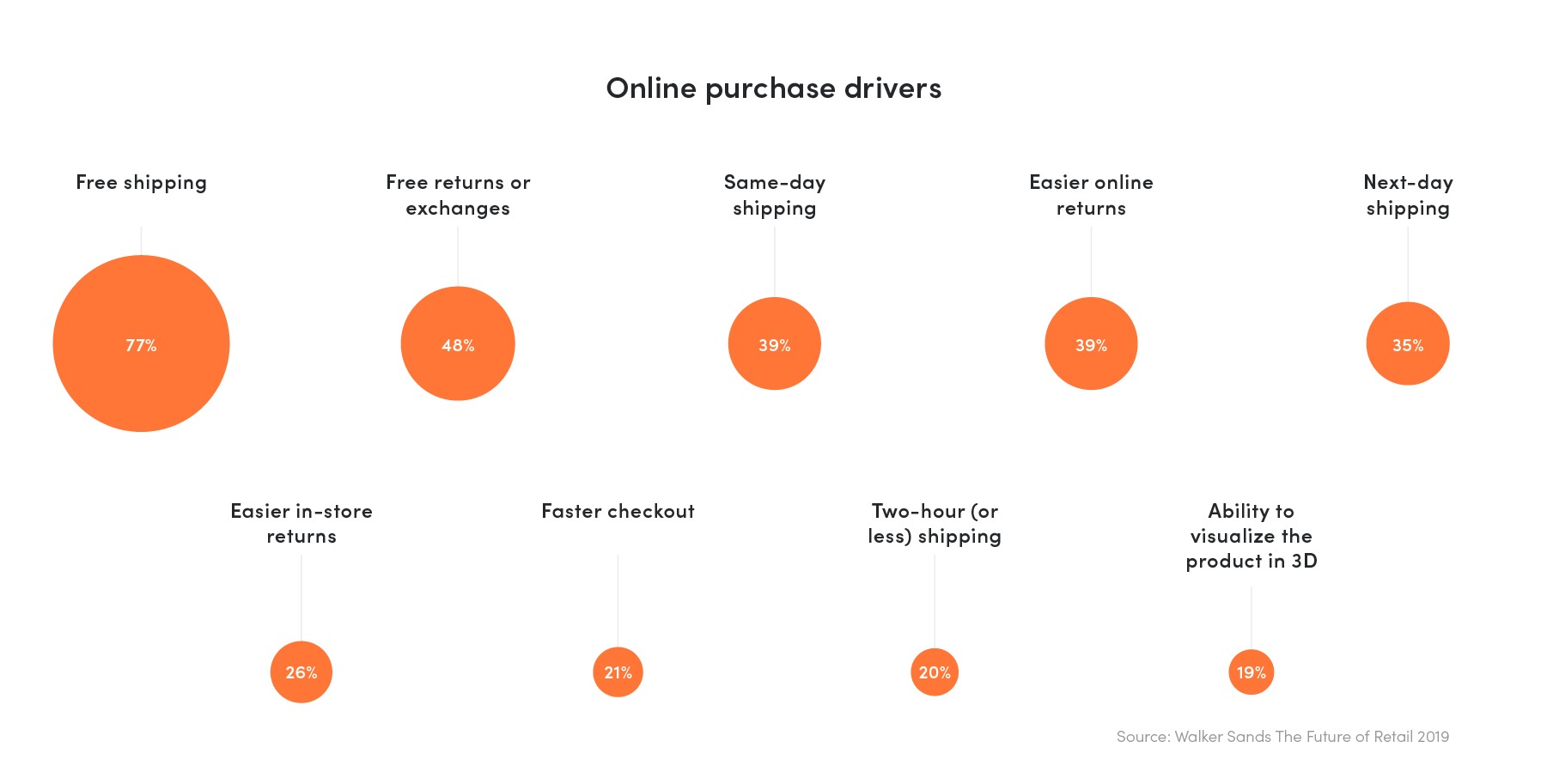Five years ago, the thought of online shopping for a new couch was probably out of the question for most. Today, it’s more of the norm. According to our 2019 Future of Retail report, 46% of consumers say they’re more willing to make a big-ticket purchase like a grill or car online than they were only one year ago.

Retailers can build on this momentum and drive big-ticket online purchases forward by cultivating a stellar digital experience focused on consumer comfort and education. Their efforts are already working — a third of respondents (33%) report having browsed for furniture online in the past year.
Helping big-ticket buyers follow through
Consumers may be increasingly confident online, but this progression didn’t happen overnight — and it’s far from over. To ease consumers into higher-stakes online shopping, retailers have identified the common anxieties of the process and made modifications to provide a more comfortable digital journey. So, which factors are responsible for the uptick in expensive items purchased online?
#1: Retailers are taking advantage of the power of opinion
Experiential retail spaces may be witnessing a surge in popularity, but the internet is still the clear preferred channel to kick off the research phase. Eighty-seven percent of consumers now begin product searches online — and they’re buying based off reviews, too. Peer reviews in particular impact up to 93% of purchase decisions.
Research has always been a lengthy stage in the buying journey when it comes to big-ticket decisions. As the research phase moves online, Amazon’s product recommendation tool based off consumer data has been a natural place to start for many. The consumer finds comfort in Amazon’s non-biased algorithm, knowing that it’s not pushing them toward a branded option and allowing them to feel more secure about making the important buying decision right then and there.
And Amazon’s commitment to transparency has worked. In fact, 24% of respondents are more willing to try products recommended by Amazon than those recommended by a brand or retailer.
#2: Retailers are influencing purchases on the platforms consumers love
When a consumer follows a brand or retailer, they effectively invite them — and their branded content — into their daily life. In return, the retailer can illustrate how a purchase from their brand aligns to the consumer’s lifestyle and interests to drive big-ticket e-commerce forward.
When done correctly, influencer marketing can be a great tool to generate trust and connect to consumers online. In fact, nearly a quarter (22%) of those aged 25-36 said they are willing to spend more money with a new brand if it has been promoted by a celebrity or social media influencer they follow.

But it doesn’t end with awareness — retailers are forging direct routes between product posts and instantaneous purchase. A consumer can now stay on the app to purchase that pricey purse on their feed. Instagram in particular grants brands easy access to drive commerce forward on a daily basis with shoppable posts and Instagram Storylinks that allow you to “swipe up to shop.”
As influencers help generate trust behind pricey products, and social platforms decrease the friction to complete the purchase, we see big-ticket transactions via social skyrocket.
#3: Retailers are improving online product visualization
Buying furniture can be a stressful endeavor as you try to understand how a large sectional will fit into your unique space. To mitigate stress and bridge the gap, retailers have begun focusing on tech-based customer experience improvements, such as product visualization, to ease buyer skepticism.
The online-furniture industry is flowering — sales are expected to grow an average annual rate of 11.9% until 2022. The growth is multifaceted, but a major element is the rise of 3D product visualization capabilities. Nearly one in five consumers (19%) say 3D product visualization features would make them more likely to shop online.
The technology allows consumers to view products from every angle so they know exactly what they are buying and can feel more secure about completing the important purchase online. Ikea, for example, offers its Place app, which allows shoppers to virtually place Ikea furniture within their own home, checking for fit, color, size and more.
#4: Retailers are providing better supply chain transparency
The uncertain delivery timeline of online shopping is a common area of stress to many prospective buyers. But retailers are taking steps to keep customers in the know about their order status. The increased communication gives the customer greater comfort and an overall better experience, which increases the likelihood of more big-ticket sales in the future. In general, retailers are already doing a pretty good job: 81% of consumers rate retailers’ communication as “excellent” or “good.”

Customers’ ability to track online purchases grants the consumer reassurance that their pricey purchase is safely on the way. Retailers have also taken to offering new delivery solutions for online purchases. For example, in-store pick up has gained steam, with 38% of consumers reporting they used it in the past year.
The rise of transparency and delivery options increases the odds that a shopper will find the right choice for their needs, empowering them to pull the trigger on their purchase.
#5: Retailers are offering faster delivery options
The convenience of to-your-door delivery is still the primary driving factor of online shopping. Free shipping was ranked as the most important factor by 77% of consumers, followed by fast shipping options like same-day shipping, which drives 39% of respondents.

Retailers are feeling the pressure to meet customer shipping expectations and follow Amazon’s lead. The e-commerce giant offers one- or two-day shipping on many big-ticket items, so it’s imperative that retailers keep up with its delivery perks if they want to compete.
As retailers strive to make fast and free shipping possible, only 17% of consumers say they are “always satisfied” with shipping options for speed of delivery. The provision of a consistently positive shipping experience should be a focus of improvement moving forward in the industry.
Many factors impact whether a consumer clicks “buy now” or heads to the brick-and-mortar store to make a large purchase. Convincing shoppers to pull the trigger online requires a trustworthy and consistent customer experience. To make adjustments consumers will see value in, retailers should focus on the aspects of online shopping that induce consumer anxiety in the first place. To ease skepticism, focus on transparency in all aspects of the buyer’s journey — from research to delivery. Growing big-ticket sales indicate that retailers are on the right track, but they must keep working to establish trust through solid research content and more attractive delivery policies.
To learn more about the outlook on e-commerce big-ticket purchases and other retail trends, download our Future of Retail 2019 report.


